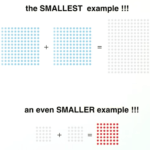Falling Atoms Are Helping NASA Measure Earth’s Gravity
Falling Atoms Are Helping NASA Measure Earth’s Gravity
ince 2000, scientists have used satellites to map the Earth’s gravitational field. But now they’ve developed a new instrument that uses quantum phenomena to deliver the most accurate measurements yet. The Earth’s gravitational pull varies from one place to another, and it can change over time. Gravity is directly related to mass and the Earth’s mass is constantly shifting. Many factors contribute to the change in the Earth’s gravity but what is the biggest thing contributing to a change in Earth’s gravity? Water! Water covers most of the Earth and is constantly shifting around. Melting glaciers, water trapped underground, all these events redistribute the mass of water. So measuring the minute changes in the gravitational field is a way to track what Earth’s water is doing, and how the water cycle is being affected by climate change. Previous NASA missions like GRACE and its successor GRACE-Follow On used twin satellites to map the field. The principle was one satellite would follow the other, and as they passed through fluctuations in the gravitational field, they would get closer or farther apart. Measuring the change in distance would tell scientists how the gravity over that part of the world differed. But with the goal of even more accuracy, NASA teamed up with the company AOSense, Inc. to try an entirely different approach. The new prototype sensor uses roughly 100 million cesium atoms sealed in a vacuum near absolute zero. Learn more about this new and ingenious application of scientific principles to map the Earth’s gravity on this episode of Elements.

